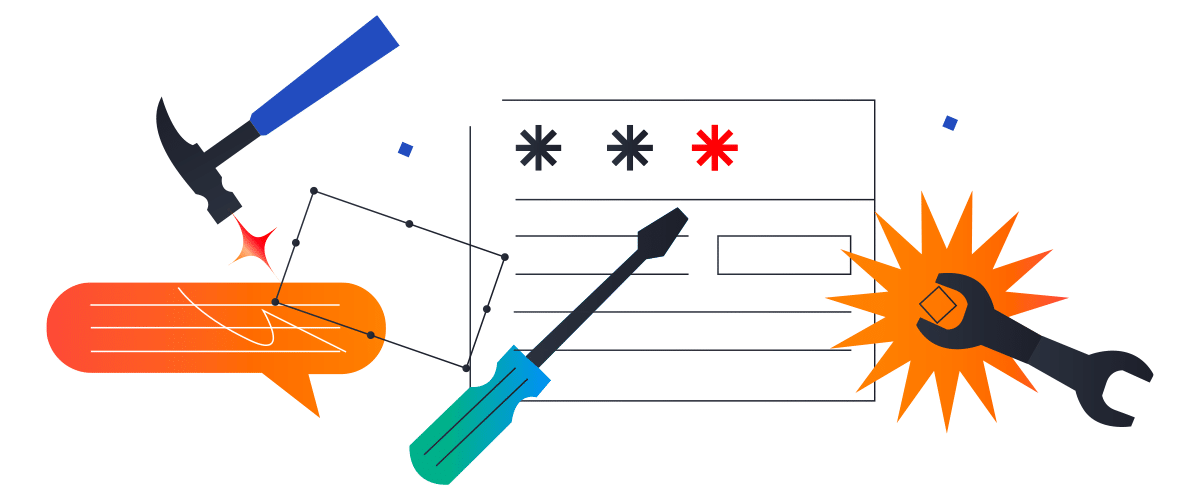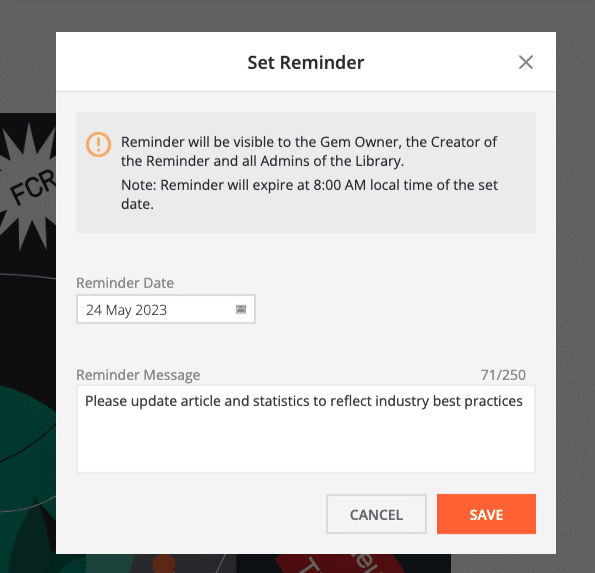No one wants to discover an outdated knowledge. Maybe you just cringed after digging up that old PDF in your company’s content (with the old company logo) last updated in August 2016. You might be thinking—wow…I sure hope a customer never sees that. Is it time to fix an outdated knowledge base?
It’s difficult to keep every line item in a knowledge base up-to-date, no matter what system you use. You can update your knowledge base retroactively, but people will discover more outdated content from time to time—even a recently published article you don’t expect. You need the right company culture, you need accountability to ensure employees pitch in to keep things current.
That said, a good knowledge management process will help you stay on top of things; after all, not all knowledge is evergreen—some documents need to be updated once a year. Products change, features change, return policies change. Content analytics, feedback, and the right content management workflow will make it easier.
In this post, you’ll learn how to ensure your knowledge base or knowledge management platform stays up to date, so customers and employees always have fresh content at their disposal.
Why keeping an outdated knowledge base up to date can be challenging
Think about how many products your company has in its arsenal that stores knowledge in some form. Many companies use a combination of products like Google Drive, Jira, Confluence, Salesforce…all typically offer basic ‘knowledge base’ functionality; if you take a closer look at your tech stack, you might find you actually have 4-5 products with some type of knowledge repository—each might be managed by different people, in different departments.
A big reason knowledge bases are difficult to maintain: many companies don’t designate a knowledge base as their source of truth; leaders implement new software if there is perceived ROI, and knowledge admins must do their best to maintain these products.
Good knowledge management talent is pretty scarce these days, you can’t expect one person to discover every out of date article living in different products across your tech stack.
If your resources are limited but you still want to clean up your knowledge base—keep reading. We’ll outline a few quick tips that don’t require anything more than adjusting your current process. It’s time to get to the bottom of all this outdated content for your customers’ sake, for your brand’s sake. Everything contributes to how people view your brand…even those outdated screenshots that seem pretty harmless.
5 tips to fix an outdated knowledge base

1Review your current knowledge management system
To start, take a step back and audit your knowledge management system; basically your people, processes, and technology used to share information. Use these basic knowledge management tips we recently outlined as a starting point; many knowledge management mistakes are completely avoidable and will make it easier to maintain a healthy knowledge base.
If your knowledge base is missing features, it might be hard to implement any process at all—like a content review process or routine knowledge audit. For example, if employees can’t easily request a change if they discover an outdated article, chances are they won’t request the change.
A good KM solution will make it easy for everyone to stay proactive and do their part to keep your knowledge base updated.
2 Define roles and responsibilities for anyone on your knowledge team
To start, ensure you have a person in charge of your knowledge base who will routinely audit content—easier said than done if you work for a small company. If the knowledge manager is you, technology can make your job easier (as we’ll cover later on), but take time to map out who in your company should be on a ‘knowledge team’.
Here are a few core job functions needed to keep knowledge up to date:
- Knowledge Managers —in charge of the entire knowledge base instance
- Content Creators—responsible for editing drafts, creating content, updating content
- Subject Matter Experts—responsible for contributing content or reviewing content
- Customer Service Agents and Customers—this group should be able to leave feedback on any piece of content that is helpful, needs improvement, or is incorrect.
Map out who does what, even if there are some overlapping responsibilities. These are just a few common roles, but not an exhaustive list.
3Audit your current content review process
Employees sometimes publish content just to get it out the door, to cross a task off their list; with so much going on day-to-day, you might not even realize how much content gets added to your knowledge base that is already out of date.
To start, gather a collection of outdated content from your knowledge base and try to determine why this content is out of date. Did someone not follow a review process at all? Were any steps skipped?
You might discover not everyone who publishes content has other people review their work; in this case, adding a senior manager to the final stage of your review process can hold people accountable and ensure unvetted content doesn’t get out.
4Create and announce a new content review process if needed
If you don’t have a review process (or yours needs revising), implement a simple step-by-step review workflow; this will ensure creators receive feedback from people (like those on a product team) who have current information. and will also catch typos and other errors.
You don’t have to go crazy with complex flowcharts just yet, just outline a simple ordered list based on roles and responsibilities on your content team. For example, if a company needs to create an article that outlines their return policy, a content review checklist may look something like this:
- Subject Matter Expert(s) collaborate and write initial draft
- Editor reviews draft for style and accuracy
- SMEs make changes where necessary
- Final draft sent to Editor for style and grammar approval
- Senior Manager reviews final draft and approves
- Legal team reviews and approves
- Content is published by project owner (SME)
Organize a review process that involves more people if needed; not all content your company produces is as important as the next. You’ll likely need a small review team for simple content (like password reset instructions), but need to loop in multiple departments for crafting a return policy that impacts company revenue.
Once you craft your review policy, make it known, set up a short session for each department if needed.
Create a simple checklist for reviewers
Once you have a better review process established, you can create a review checklist for each person on the review team. Copywriters, Editors, Senior Leaders—each person will follow a different review process, so why not make it easier?
Check out this post on the GatherContent blog that goes in-depth on checklists, steps, and what to include in a simple content review process.
5Set expiration dates for outdated content
You know ahead of time some content WILL need a refresh—so why not be proactive instead of reactive? See if your knowledge base allows creators to set expiration dates for files; a simple reminder is a great way to notify creators (and knowledge managers) if an important document is due for an update.

This is one of the features of the Shelf knowledge management platform I like most; for those articles that contain a year like ‘2022’ in the title, the reminder function makes it easy to update the year (and content) prior to the new year.
You’d be surprised how much more engagement you receive when customers don’t disregard a still-perfectly-relevant article as old news.
Is it time to upgrade your knowledge base?
You need more than a basic knowledge base to keep content up-to-date—you need a complete solution to approve/publish content, track content health, view insights, manage feedback. If you currently use a combination of software plus a knowledge base, it may be time to consider a knowledge management platform. Many knowledge management products are fine for keeping internal articles up to date, but not other content types like documents, decision trees, FAQs, wikis, documents, or other file types support agents and customers use.
If you need guidance on what your source of truth for knowledge should be, check out this blog post. It covers a few top KM platforms and knowledge bases and how they differ—so you can have what you need to keep content fresh.
Read this Next
Don’t Just Store Knowledge—Automate Knowledge Work
Download our latest white paper to explore the next generation of knowledge management. You’ll learn how a modern knowledge management platform works, how it uses AI to surface and maintain knowledge, and how your organization will benefit.





